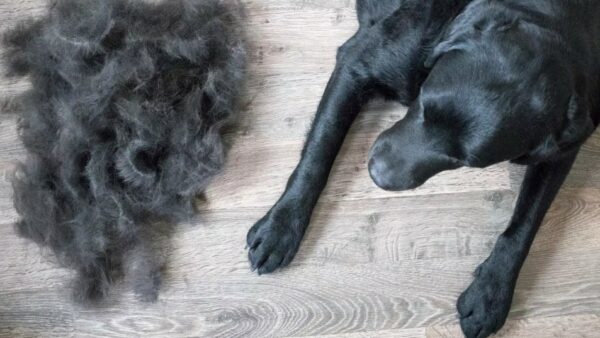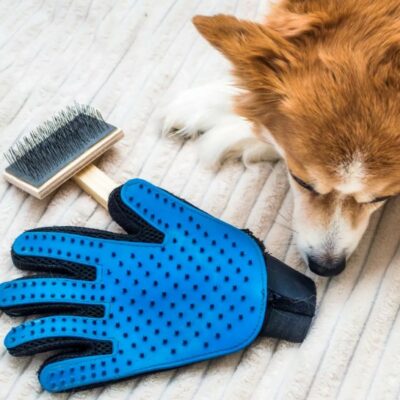Excessive shedding in dogs: How much shedding is normal and how can you prevent shedding?

WHAT TO READ IN THE TEXT:
- Why do dogs shed?
- What is a normal amount of shedding in dogs?
- How can you prevent hair loss in dogs?
Hair loss is a normal occurrence in almost all dog breeds. However, excessive hair loss, especially if it increases suddenly, can be a sign of a more serious health problem.
In this article, you will discover why dogs shed, what is considered a normal amount of shedding, and what warning signs may indicate a possible problem.
Why do dogs shed?
Dogs use their fur to regulate their body temperature and to protect their skin from the sun and other environmental factors. When your dog's hair growth stops, the fur starts to fall out naturally by shedding.
The amount and frequency of hair loss in dogs depends on several factors, including:
- The breed of dog
- The season and the environment
- The health status of the dog
As mentioned earlier, hair loss is a completely normal phenomenon in all dogs, although some dogs shed more than others. But hair loss can also be caused by stress or another health problem. Here are some of the most common causes of shedding in dogs and what to look out for.
Seasonal shedding 
Dogs, especially breeds with an undercoat, usually shed in spring and autumn.
Some of the breeds that shed more during these seasons due to their fur are:
- German shepherd
- Labrador retriever
- Border collie
- Beagle
Hair loss due to stress
When major changes occur in your pet's environment, the amount of hair shedding can increase significantly. Dogs often shed more in stressful situations. For example, you may notice that your dog loses more hair when visiting the vet.
Dogs with separation anxiety also tend to shed more when their owner leaves them home alone. If you suspect your dog suffers from some form of anxiety or is often stressed and scared, consult a dog behaviourist.
Skin infections and skin diseases
Certain skin conditions and infections in dogs can also lead to excessive hair loss, or even baldness in certain areas.
For example, parasitic infections such as ticks, fleas or mites can cause excessive hair loss. In addition, ringworm, dermatitis, fungal infections, autoimmune diseases and certain cancers can cause hair loss.
If you notice signs of skin irritation in your dog, such as bumps, crusts or rashes combined with hair loss, consult a vet immediately for a quick diagnosis.
Allergies as a cause of shedding
A common cause of hair loss in dogs is allergies. Itching and hair loss are the most common symptoms of allergies in dogs, especially when they occur together. Food, medicines, fleas, household cleaners or grooming products can cause allergic reactions in your pet.
There are four different types of allergies in dogs:
- Skin allergies
- Seasonal allergies
- Food allergies
- Acute allergies
Any of these allergies can cause hair loss. If you suspect your dog's shedding is caused by allergies, and your pet shows other signs of allergic reactions, such as itching, licking its paws, or more severe symptoms such as vomiting or diarrhoea, contact your vet.
What is a normal amount of shedding in dogs?
Actually, there is no "normal" amount of shedding. There are many factors that affect hair loss in dogs, such as breed, quality and type of coat, the food they eat, and more.
The best way to find out if it is a health problem is to make an appointment with the vet. The vet can perform all the necessary tests to determine if there is a medical cause for your dog's shedding.

